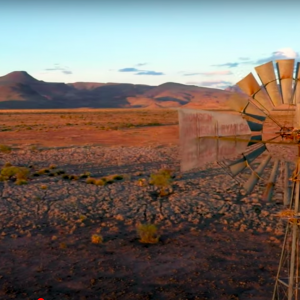Federal Water Tap, August 10: EPA Settles Gold King Mine Lawsuit with Utah
The Rundown
The EPA pledges funds to clean up abandoned mines in Colorado. The GAO suggests that Congress fund a climate migration pilot program. California Democrats introduce a bill to clean up sewage pollution in rivers that cross the California-Mexico border. A separate House bill would provide financial aid to rural water utilities affected by the pandemic. The U.S. Department of Agriculture announces $462 million for rural water and sewer systems. And lastly, in California, draining one reservoir and potentially raising another.
“That is going to take all of us working together on a bipartisan basis to get it done. It is going to take a sense of urgency, a sense of responsibility for the role that we play at this moment in time in the history of our country and people’s lives. It is going to take a lot of hard work. It is going to take political will more than anything else because the other things, we can do. We have to decide we to want to do them.” — Sen. Debbie Stabenow (D-MI) speaking on the Senate floor about negotiations for the next round of pandemic emergency relief.
By the Numbers
33: Members of the Environmental Financial Advisory Board, a panel of experts that advises the EPA on matters related to the eternal question, “How to pay for it?” Fourteen of the members are being reappointed to the board. (EPA)
$462 million: Grants and loans announced for rural water and sewer infrastructure. Viroqua, Wisconsin, for instance, received a $3 million loan to replace cracked sewer pipes and install new drinking water mains. (USDA)
News Briefs
Gold King Mine Settlement
The U.S. Environmental Protection Agency settled a lawsuit with the state of Utah over claims related to a spill of toxic water, in 2015, from the abandoned Gold King mine.
The EPA will fund $3 million in clean water assessments in Utah. They include septic system studies, nutrient control, and water quality evaluations for Utah Lake. The agency will also assess abandoned mine sites in Utah for potential Superfund status.
As part of the agreement, the EPA also committed to cleaning up mining sites in the vicinity of Gold King, which have collectively been placed on the national Superfund list as the Bonita Peak Mining District site. The estimated cost of remediation is $220 million.
EPA contractors accidentally triggered the spill while preparing to clean up Gold King mine, which is located in Colorado, upstream of Utah. Water laced with heavy metals gushed from the mine and polluted rivers in Colorado, New Mexico, Utah, and the Navajo Nation.
Rural Water Systems Bill
Reps. David Rouzer (R-NC) and Filemon Vela (D-TX) introduced a bill that would provide grants, loans, and loan forgiveness to rural water utilities that have been harmed financially by the Covid-19 pandemic.
Border Water Restoration Act
Five House Democrats who represent districts in Southern California introduced a bill to clean up waterways along the California-Mexico border.
The bill puts the U.S. Environmental Protection Agency in charge of coordinating federal efforts to reduce sewage pollution in the New and Tijuana rivers.
Congress recently approved $300 million for sewage infrastructure as part of the new North American trade agreement.
Studies and Reports
Climate Migration
A government auditor says that Congress should fund a pilot program that helps federal agencies figure out their role in assisting communities that want to move people out of the way of rising seas, floods, and fires.
The Government Accountability Office, which works at the behest of Congress, said a fully funded program is not warranted because there is not enough information about what interventions work.
To conduct its audit, the GAO looked at the few existing examples in the United States of communities attempting to move to less vulnerable areas: Newtok, Alaska, and Isle de Jean Charles, Louisiana.
On the Radar
Draining a California Dam
The Santa Clara Valley Water District submitted its plan to federal regulators for drawing down the reservoir of Anderson Dam.
The Federal Energy Regulatory Commission required that the reservoir be drained so that safety repairs could be made to make the structure more resilient to earthquakes.
Drawdown will begin on October 1 and should be completed by April 2021. Construction is expected to be completed by late 2023.
Raising a California Dam
The Bureau of Reclamation released a supplemental environmental impact statement for raising Shasta Dam, which creates the state’s largest reservoir.
Increasing the dam’s height has been discussed for decades. The current idea is to add 18.5 feet to the top of the 600-foot-tall crest, allowing for more water to be stored in the reservoir.
The dam is a key water-supply asset for the federal Central Valley Project, which provides water to farms and cities in the central and southern reaches of the state.
The project is opposed by the Winnemem Wintu Tribe because the extra water would flood part of the McCloud River, destroying fish habitat and submerging sacred sites.
Public comments on the impact statement are being accepted through September 21.
Federal Water Tap is a weekly digest spotting trends in U.S. government water policy. To get more water news, follow Circle of Blue on Twitter and sign up for our newsletter.
Brett writes about agriculture, energy, infrastructure, and the politics and economics of water in the United States. He also writes the Federal Water Tap, Circle of Blue’s weekly digest of U.S. government water news. He is the winner of two Society of Environmental Journalists reporting awards, one of the top honors in American environmental journalism: first place for explanatory reporting for a series on septic system pollution in the United States(2016) and third place for beat reporting in a small market (2014). He received the Sierra Club’s Distinguished Service Award in 2018. Brett lives in Seattle, where he hikes the mountains and bakes pies. Contact Brett Walton




Leave a Reply
Want to join the discussion?Feel free to contribute!